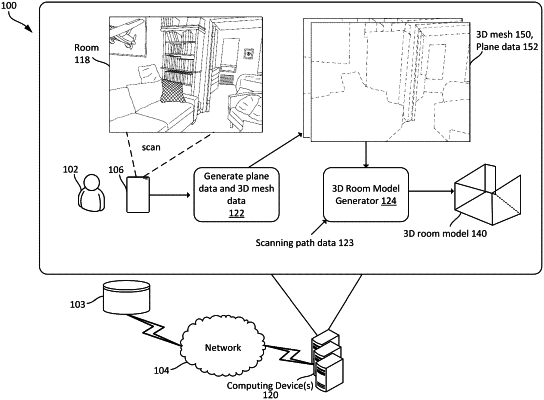| CPC G06T 17/205 (2013.01) [G06F 30/13 (2020.01); G06T 19/20 (2013.01); G06T 2219/028 (2013.01)] | 18 Claims |

|
4. A method, comprising:
receiving three-dimensional (3D) mesh data representing a room;
receiving plane data comprising a plurality of planes, wherein each plane of the plurality of planes represents a planar surface detected in the room;
determining a first plurality of wall candidates for a 3D model of the room based at least in part on the plane data;
determining a second plurality of wall candidates for the 3D model of the room by modifying the first plurality of wall candidates based on a comparison of the first plurality of wall candidates to the 3D mesh data and further based at least in part by extending a first length of a first wall candidate of the plane data to be commensurate with a second length of a vertical surface represented in the 3D mesh data; and
generating the 3D model of the room based at least in part on the second plurality of wall candidates.
|